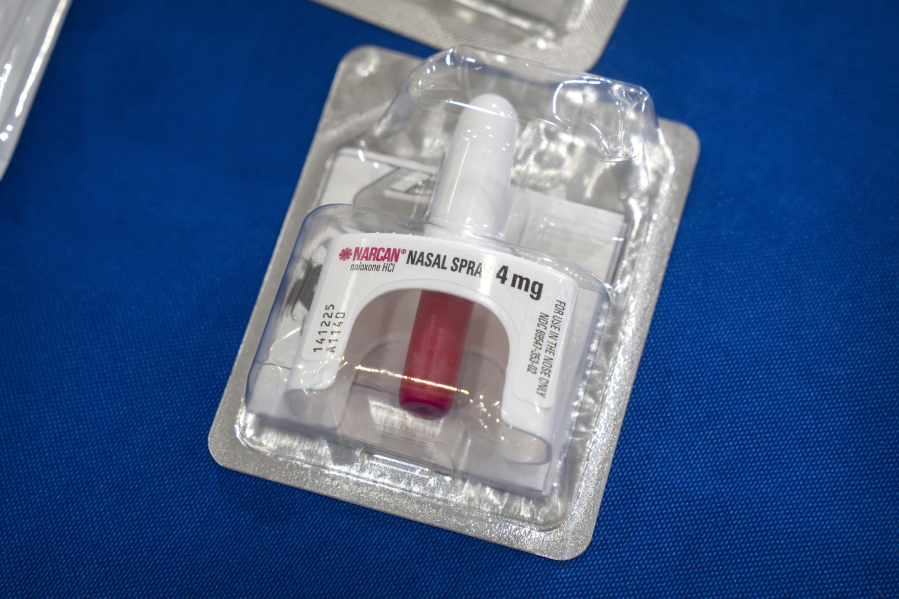The state Department of Health announced earlier this month it will provide naloxone to public high schools throughout the state to counter a spike in overdose deaths among youth.
Naloxone, also known by its brand name, Narcan, can reverse the effects of overdose by fentanyl or other opioids. Opioid-related deaths among youth ages 14 through 18 surged from 3.6 to 10.6 per 100,000 between 2016 and 2022, according to the state health department.
The health department plans to provide two kits of intranasal naloxone to each high school in the state with 2,000 students or more.
The state already mandates that high schools have doses of naloxone to be used in the event of an overdose. Some schools keep doses in nurses’ offices, while others mount them on hallway walls, just as they do with automated external defibrillators.
Representatives from Evergreen, Vancouver and Battle Ground school districts each said they have not yet received any new doses of naloxone nor information on how ordering or distribution will work under the new Department of Health plan.
According to John Doyle, public information officer for the state health department, regional educational service districts are managing the distribution of naloxone to local districts and schools.
Existing education
Last school year, Clark County sheriff’s Sgt. Bill Sofianos led a series of evening presentations at schools across the region on the growing risks and prevalence of fentanyl. The in-school fentanyl overdose death of a Hudson’s Bay High School student in the spring of 2022 inspired Sofianos to offer the presentations.
Student Katie Thornton also sounded the alarm about overdose risks. Then a junior at Henrietta Lacks Health and Bioscience High School, Thornton last spring worked with Brandy Benedict, a Clark County Public Health nurse, to demonstrate naloxone administration to students.
Benedict referred to Thornton’s work as a “trail-blazing project” and commended her on providing guidance that was scarcely available to students in the region.
Since then, school nurses, security staff and other faculty members have been trained to administer naloxone. Evergreen, Vancouver and other school districts last spring were in the process of adding similar training for classroom teachers, paraeducators and bus drivers.
In addition, Clark County Public Health has taught students, school nurses and staff about proper usage of naloxone, said Marissa Armstrong, the department’s communications manager.
Naloxone is available to individuals and families over the counter or from a pharmacy by using the statewide standing order, which acts like a prescription for anyone at risk of an opioid overdose.





